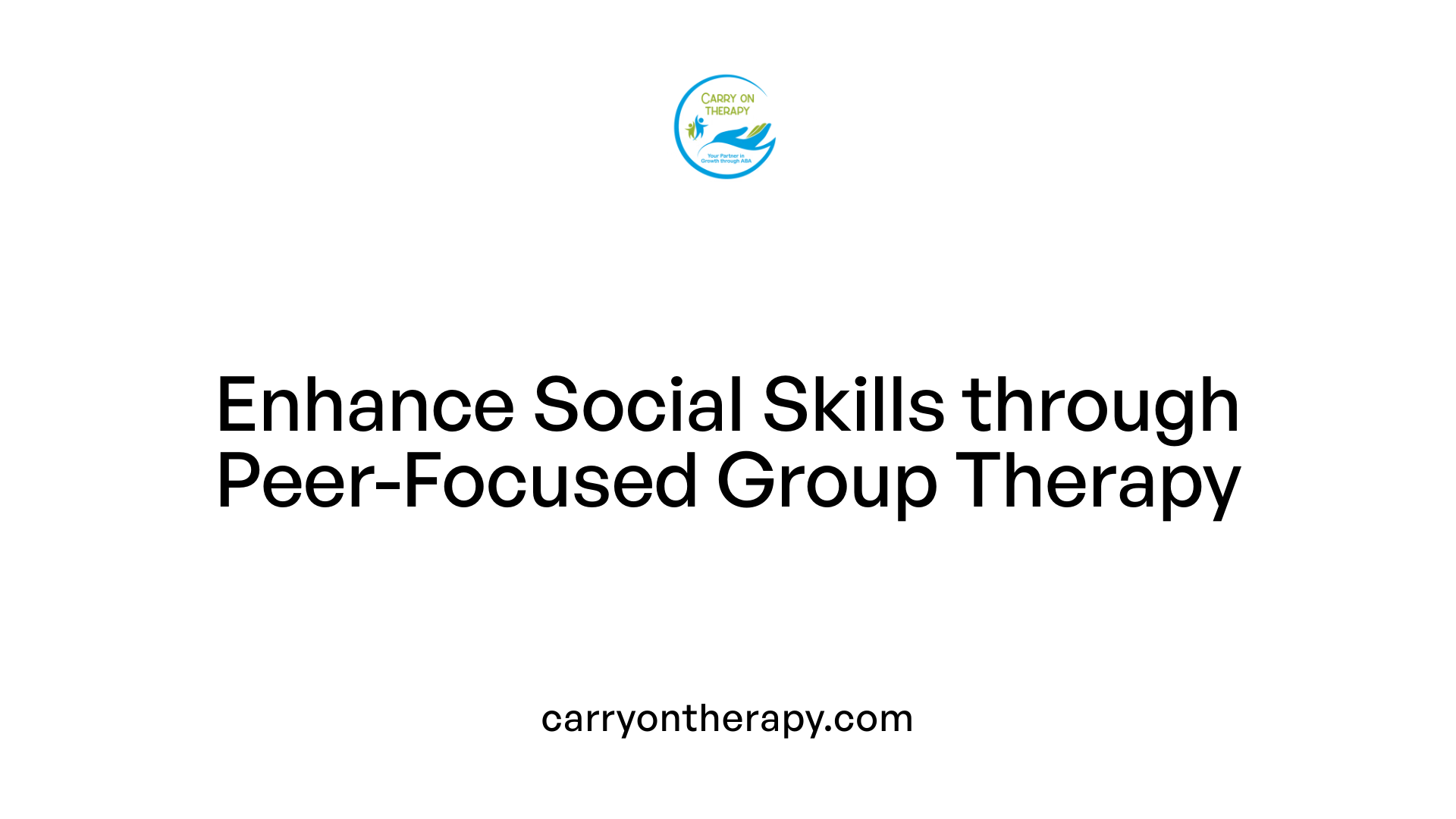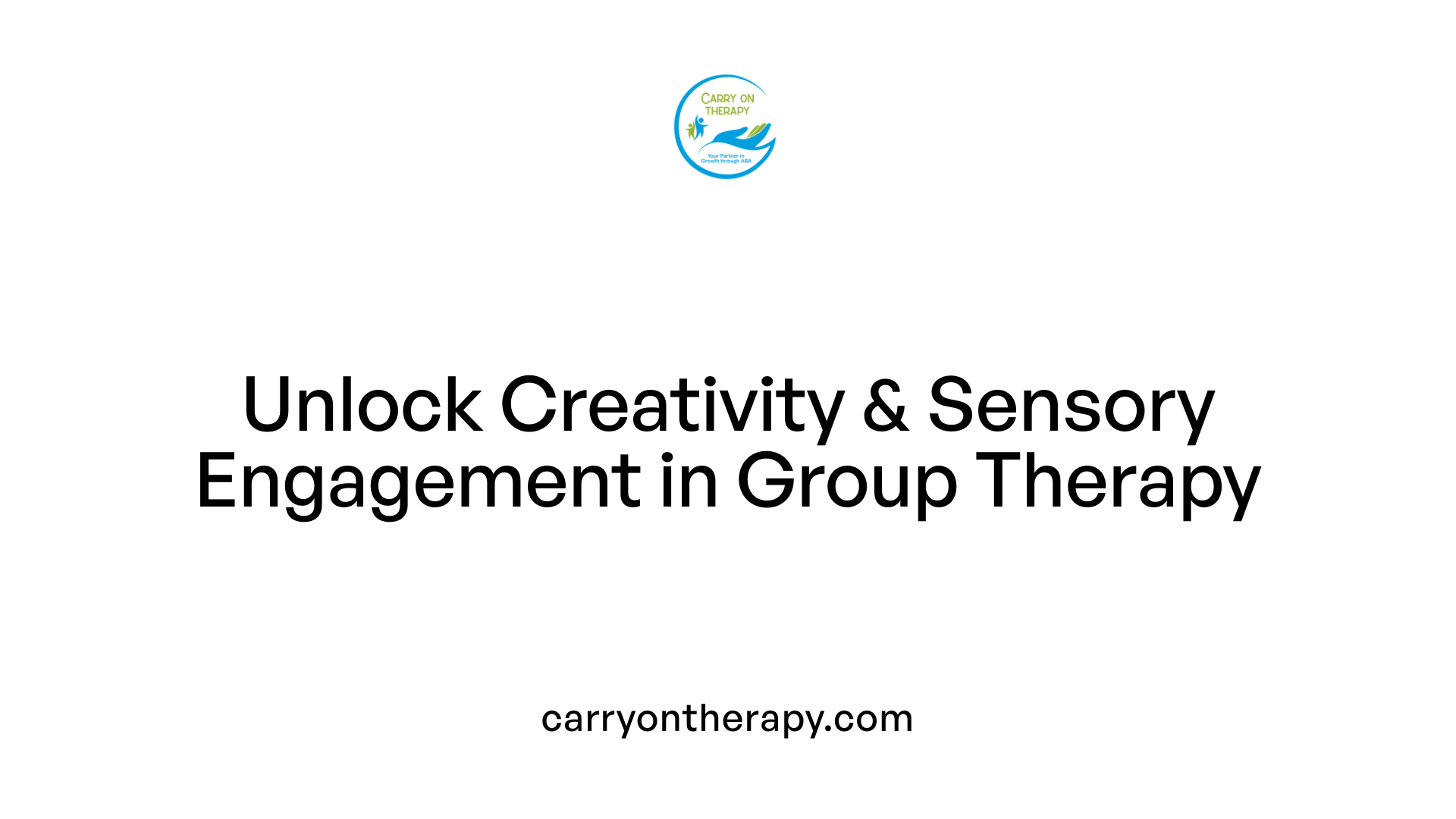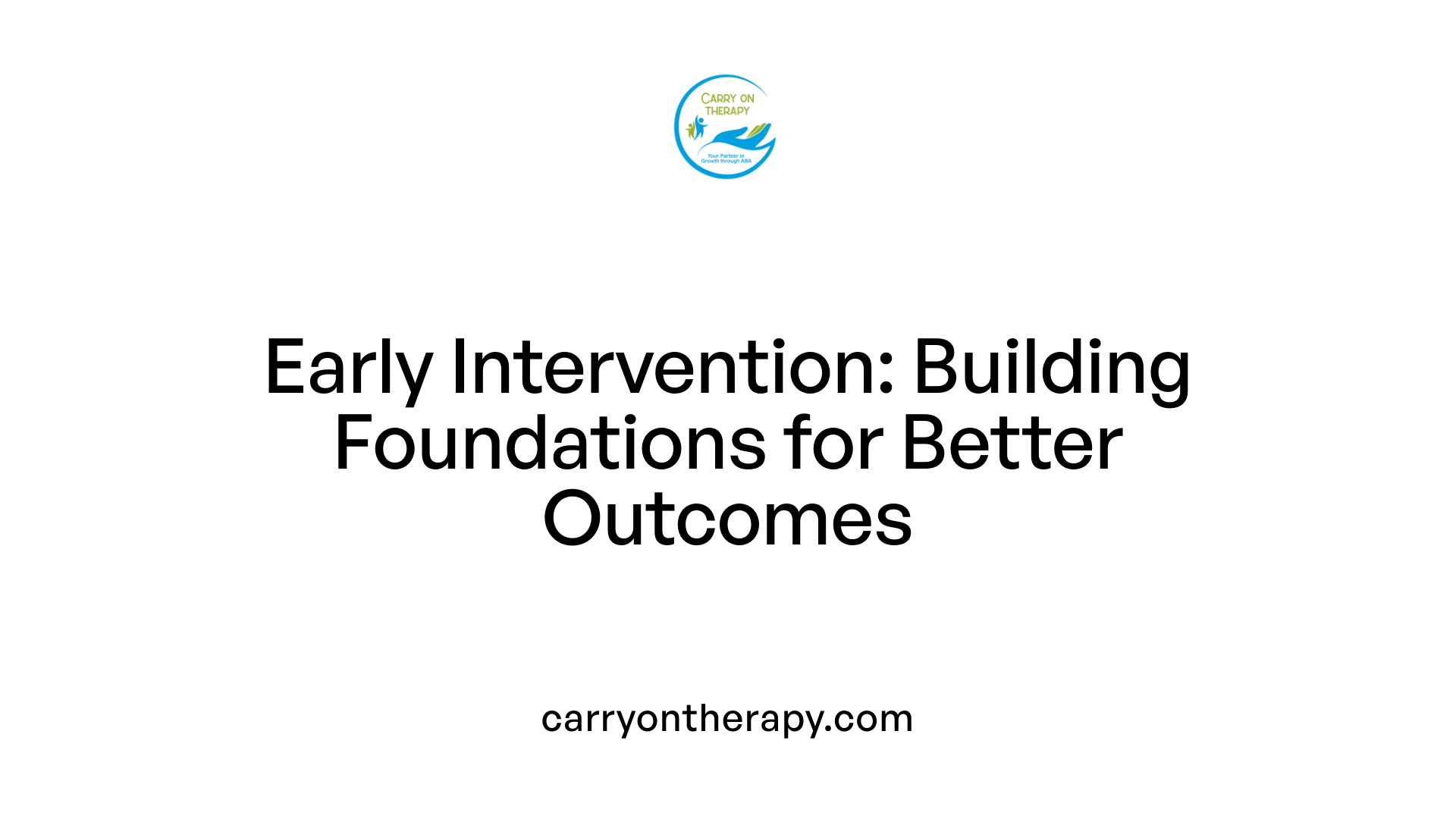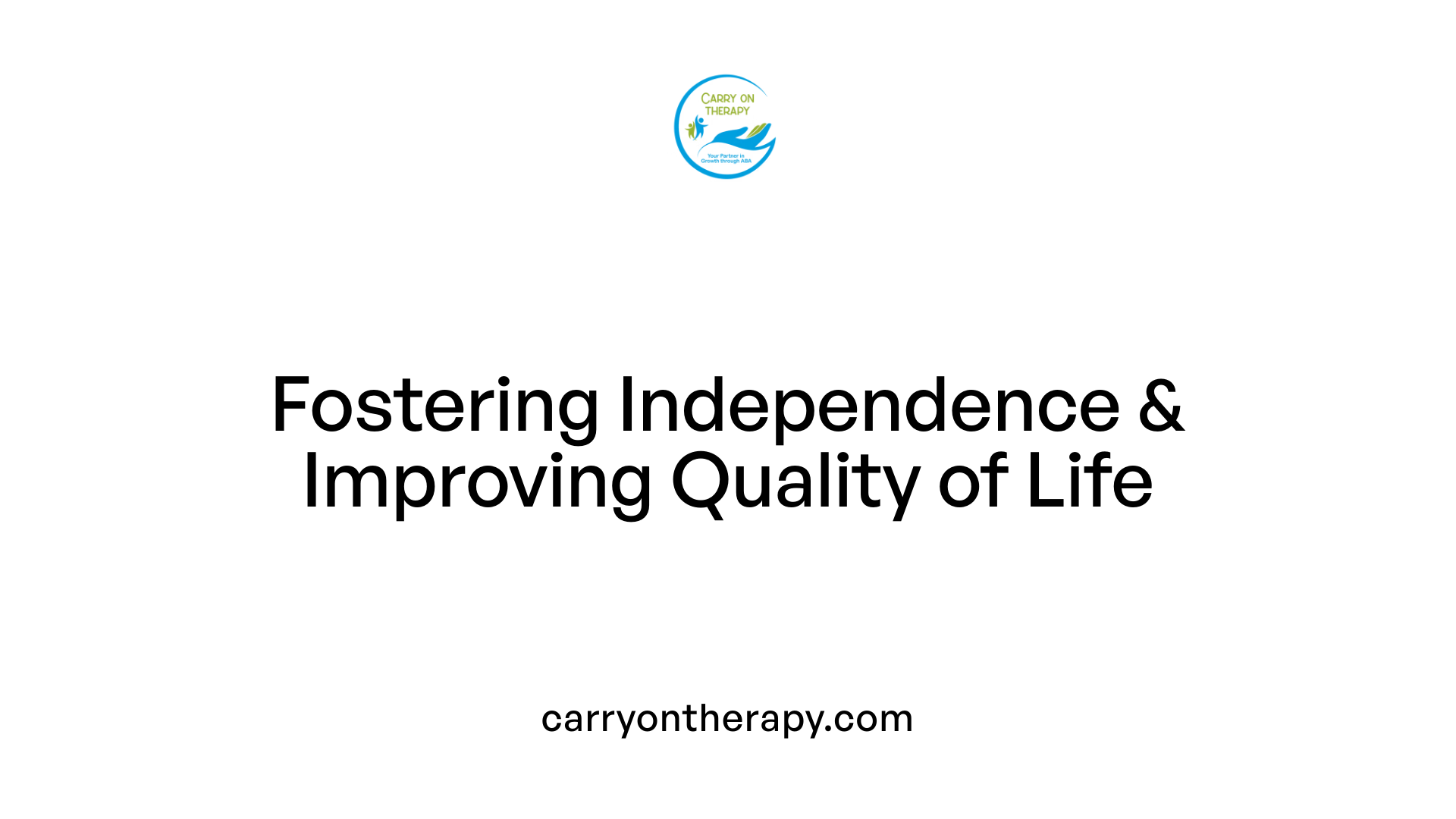The Benefits of Group Therapy for Children with Autism
Enhancing Social Growth: The Power of Group Therapy for Children with Autism

Understanding Group Therapy in Autism Support
Group therapy for children with autism is an impactful therapeutic approach that builds important social, communication, and behavioral skills in a communal setting. By blending scientific methods, individual tailoring, and creative techniques, group sessions facilitate meaningful social interactions and shared experiences, offering children with autism new pathways toward independence and emotional engagement.
Foundations of Applied Behavior Analysis in Autism Therapy
What is behavior analysis therapy and how is it used to support individuals with autism?
Behavior analysis therapy, or Applied Behavior Analysis (ABA), is a scientifically grounded method focusing on teaching new skills and reducing challenging behaviors. It is widely recognized for supporting individuals with autism spectrum disorder (ASD), helping improve communication, social skills, and everyday functioning.
ABA therapy relies heavily on positive reinforcement—rewarding desired behaviors to increase their frequency. Through tailored strategies such as discrete trial teaching, naturalistic teaching, and social skills training, the therapy addresses the unique strengths and challenges of each child. Consistency and structured routines within therapy sessions give children a sense of security and predictability.
Therapy techniques and individualized treatment plans
ABA interventions are highly individualized, crafted carefully to meet the specific needs of each child. Therapists work closely with families to develop personalized plans that may be delivered in various locations, including the home and school settings.
The therapy includes group sessions to enhance social interaction skills like sharing, turn-taking, and eye contact. Parent training is an essential part of the process, empowering caregivers to reinforce positive behaviors at home. School consultation services further support children's classroom success by developing ABA-based behavior plans.
By combining multiple techniques and adapting to each child's circumstances, ABA facilitates improvements in self-care, problem-solving, and decision-making skills. This holistic approach fosters greater independence and enriches quality of life for children with autism and their families.
Group Therapy: Facilitating Social Skills Through Peer Interaction

How does group therapy help develop social skills in children with autism?
Group therapy is an essential part of ABA therapy that focuses on enhancing social skills in children with autism. These sessions provide a structured and supportive environment where children practice important social behaviors such as sharing, taking turns, and maintaining eye contact.
Positive reinforcement plays a central role in group therapy. Desired behaviors are rewarded, which encourages children to increase their social engagement. This reinforcement helps boost social motivation and reciprocity, making peer interactions more natural and enjoyable.
Moreover, group therapy encourages spontaneous social interactions and mutual regulation. Through creative activities such as drawing, movement, and rhythmic music, children explore self-expression and social connection. These embodied experiences support emotional understanding and social coordination.
The use of visual symbols and predictable routines within group settings helps accommodate sensory sensitivities common in children with autism. This predictability fosters a sense of safety and stability, enabling children to feel more comfortable and open to social engagement.
Overall, group therapy nurtures momentary shared understandings among peers, promotes mutual regulation, and significantly improves social skills by providing children with autism the opportunity to practice communication and cooperation in a peer-filled environment.
Innovative Creative Arts and Sensory-Motor Approaches in Group Therapy

How do creative arts enrich group therapy for children with autism?
Creative arts such as drawing and movement play a vital role in group therapy for children with autism by fostering self-expression and exploration of self and others. These non-verbal creative techniques provide an alternative communication channel, especially beneficial for minimally verbal children.
What is the role of non-verbal communication in this therapeutic approach?
Non-verbal methods like drawing and movement help children communicate without relying on spoken words. This approach supports the development of social engagement and body awareness, aiding children in expressing emotions and intentions more freely.
How do drawing and movement activities contribute to therapy?
Drawing allows children to externalize thoughts and feelings visually, while movement-based activities, including the use of props such as stretching bands, encourage shared spaces and joint attention. These modalities promote spontaneous social interactions and enhance perceptual awareness.
Why are sensory-motor experiences central to therapy?
Sensory-motor experiences are crucial as they aid in developing body image, self-regulation, and social engagement. They support children in managing sensory sensitivities and contribute to greater social motivation and reciprocity.
What benefits do music and rhythmic activities bring?
Music and rhythmic group activities facilitate mutual emotional understanding and social coordination. They encourage shared timing and emotional connection, which strengthen social bonds and improve communication skills among children with autism.
These creative and sensory-motor approaches work in concert with evidence-based behavioral methods to foster a supportive environment that enhances communication, social interaction, and emotional regulation for children with autism.
Early Intervention Models Enhancing Group Therapy Outcomes

What is the Early Start Denver Model and its link to ABA?
The Early Start Denver Model (ESDM) is an innovative early intervention program for children with autism that builds on the principles of Applied Behavior Analysis (ABA). Unlike traditional ABA approaches, ESDM integrates learning through play, child interests, and natural environments, enhancing engagement and motivation.
How does ESDM affect language and cognitive skills?
Children participating in ESDM demonstrate marked improvements in crucial areas such as language development, cognition, motor skills, and daily living abilities. The model promotes foundational social skills like eye contact and communication through naturalistic and interactive play.
What impact does ESDM have on IQ and daily living skills?
A pivotal study published in Pediatrics showed that children in ESDM gained an average of 17.6 IQ points over two years, a substantial increase compared to standard treatments. These children also outperformed peers in daily living activities and motor skills, indicating broad developmental gains.
Why is early intervention through models like ESDM important?
Early intervention utilizing programs like ESDM can produce profound outcomes, including shifts in diagnostic status. Some children treated early lost their initial autism diagnosis and were reclassified under milder neurodevelopmental categories, underscoring the potential of timely, tailored therapy.
How do group therapy and creative arts integrate with early intervention?
ESDM's focus on natural environments and play complements group therapy approaches that employ creative arts, such as drawing and movement. These non-verbal, sensory-motor activities foster joint attention, social motivation, and communication, making them ideal for minimally verbal children.
In summary, the Early Start Denver Model enriches group therapy outcomes by combining ABA-based strategies with play and naturalistic learning, leading to notable improvements in IQ, social engagement, and daily functioning among children with autism.
Supporting Families: Parent Involvement and Extended Care

How does parent training enhance ABA therapy outcomes?
Parent training is a vital component of ABA therapy because it equips caregivers with the knowledge and skills to reinforce therapeutic techniques at home. This ongoing involvement ensures consistency and helps generalize learned behaviors across different environments, improving the child's progress and overall effectiveness of the treatment.
What family support services are typically offered alongside ABA therapy?
In addition to therapy sessions, families often receive support such as parent groups, community events, and educational resources. These services provide emotional support, practical advice, and a sense of community, which help families navigate challenges and celebrate their child's milestones together.
How does school consultation complement ABA therapy?
ABA therapists frequently collaborate with schools to develop behavior plans tailored to each child’s needs. This consultation helps ensure that strategies used during therapy are reinforced in the classroom, promoting success in social interactions and academic tasks.
Which home reinforcement techniques support therapy gains?
Parents and caregivers are guided to implement positive reinforcement strategies at home, including consistent routines and rewarding desired behaviors. Visual symbols and sensory-motor activities can also be used to increase predictability and support communication, especially for children with sensory sensitivities.
By actively involving parents and extending support beyond therapy sessions to schools and communities, ABA therapy fosters a cohesive and supportive environment crucial for the child's growth and family well-being.
Holistic Impact: Enhancing Independence and Quality of Life

How does ABA therapy promote independent living skills?
ABA therapy is instrumental in teaching children with autism essential independent living skills such as self-grooming, establishing sleep routines, and managing basic self-care tasks. By focusing on these daily activities, therapy supports children in gaining greater autonomy and eases the transition toward independent adulthood.
What role does behavior reduction play in ABA therapy?
A central aim of ABA therapy is reducing problematic behaviors by using positive reinforcement to encourage desired behaviors. This approach not only diminishes challenging behaviors but also replaces them with skills that improve social interaction and daily functioning.
How does the development of self-care skills contribute to a child's growth?
The acquisition of self-care abilities helps children become less reliant on caregivers, fostering confidence and personal responsibility. These skills build the foundation for more complex life tasks and better overall adjustment.
In what ways does ABA therapy improve overall quality of life for children with autism and their families?
ABA therapy enhances communication, social skills, and behavioral control in children, which leads to improved family dynamics and satisfaction. Tailored interventions help children meet personal goals, boosting their happiness and easing parental stress.
Why are predictability and routine important in ABA therapy?
Structured and consistent sessions provide a predictable environment that helps children with autism feel secure and stable. This routine reduces anxiety and prepares them for success in learning and social settings by creating a dependable framework for daily life.
Towards Brighter Social Futures for Children with Autism
Group therapy leverages the strengths of Applied Behavior Analysis along with creative and sensory-focused interventions to empower children with autism. By fostering social skills, communication, and independence in a structured yet dynamic environment, group therapy plays a transformative role in enhancing quality of life for both children and their families. Early intervention, consistent routines, and collaborative family support reinforce these benefits, setting the stage for ongoing growth, mutual understanding, and meaningful connections within their communities.
References
- 5 Benefits of ABA Therapy for Children With Autism
- Early intervention yields big benefits for children with autism
- ABA Therapy for Children with Autism in Georgia
- Creative Group Therapy for Children With Autism - PMC
- Applied Behavior Analysis (ABA)
- Applied Behavior Analysis in Children and Youth with Autism ...
- What Is Applied Behavior Analysis - Exploring ABA ...
- The 7 Dimensions & Core Principles of ABA







